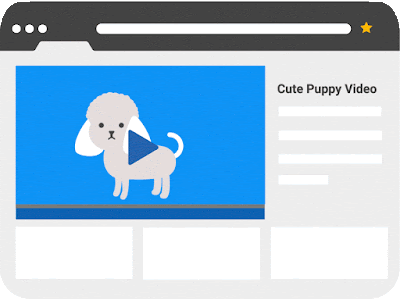This is the final guest post from AdSense publisher Brandon Gaille. Brandon has built his small business marketing blog, BrandonGaille.com, to over 2 million monthly visitors in less than three years. He’s featured as our guest blogger to share insights and tips from his personal blogging experience to help AdSense publishers grow earnings. If you’re new to AdSense, be sure to sign up for AdSense and start turning your #PassionIntoProfit.
Every year more people are using their phones and devices to browse web pages. In 2013, mobile made up only 17% of web traffic. In 2016, this number has risen to over 38%. Within the next couple of years, mobile traffic will easily surpass 50%.

This is why you need to take time to optimize your AdSense ads for mobile traffic. Although you can easily grab a responsive AdSense ad unit, there are more ways to optimize your ad units for mobile. It may be the easiest way, but I’ve found that the easy way usually does not always produce the best results. I’ve tested the responsive ad units on my blogs against manual optimization, and the results were staggering.
The manual optimization of my ads produced a 54% increase in my AdSense revenue.
Here’s what I learned from the tests I ran:
#1 A large mobile banner at the top of the page earned the most money on my site
The highest producing location was below the title of a post and above the first paragraph. It’s important to know that AdSense amended their policy on ads above the fold on mobile devices, and you can no longer use the 300x250 ad above the fold on mobile.
#2 Hide the sidebar ads in tablets and mobile
The sidebar is going to be pushed down to the bottom of the post when it is viewed in mobile. This is essentially banishing any ads in the sidebar to no man’s land. Most premium WordPress themes will allow you to turn off ad spots in the sidebar. This will allow you to drop in an additional AdSense ad into the post to get maximum monetization from mobile.
#3 The best ad grouping was top, middle, and bottom
Out of all the mobile ad groupings, this one easily produced the most revenue for me. The grouping was made up of three 250x250 ads. The first ad was below the title and above the first paragraph. The second ad was placed after the 6th paragraph of the post. The final ad was placed at the end of the post.
In addition to mobile optimization, I applied four AdSense optimization strategies, which resulted in an overall revenue increase of close to 300%. Whether you are making $500/month or $5000/month, a 300% increase can make a huge impact on your yearly earnings.
Go here to read all of my “5 AdSense Optimization Strategies that Will Increase Your Earnings.”
Posted By
Brandon Gaille

Brandon Gaille is an AdSense publisher. You can learn more about Brandon at BrandonGaille.com and listen to his popular blogging podcast, The Blog Millionaire.
If you’re new to AdSense, be sure to sign up for AdSense and start turning your #PassionIntoProfit.
Every year more people are using their phones and devices to browse web pages. In 2013, mobile made up only 17% of web traffic. In 2016, this number has risen to over 38%. Within the next couple of years, mobile traffic will easily surpass 50%.
This is why you need to take time to optimize your AdSense ads for mobile traffic. Although you can easily grab a responsive AdSense ad unit, there are more ways to optimize your ad units for mobile. It may be the easiest way, but I’ve found that the easy way usually does not always produce the best results. I’ve tested the responsive ad units on my blogs against manual optimization, and the results were staggering.
The manual optimization of my ads produced a 54% increase in my AdSense revenue.
Here’s what I learned from the tests I ran:
#1 A large mobile banner at the top of the page earned the most money on my site
The highest producing location was below the title of a post and above the first paragraph. It’s important to know that AdSense amended their policy on ads above the fold on mobile devices, and you can no longer use the 300x250 ad above the fold on mobile.
#2 Hide the sidebar ads in tablets and mobile
The sidebar is going to be pushed down to the bottom of the post when it is viewed in mobile. This is essentially banishing any ads in the sidebar to no man’s land. Most premium WordPress themes will allow you to turn off ad spots in the sidebar. This will allow you to drop in an additional AdSense ad into the post to get maximum monetization from mobile.
#3 The best ad grouping was top, middle, and bottom
Out of all the mobile ad groupings, this one easily produced the most revenue for me. The grouping was made up of three 250x250 ads. The first ad was below the title and above the first paragraph. The second ad was placed after the 6th paragraph of the post. The final ad was placed at the end of the post.
In addition to mobile optimization, I applied four AdSense optimization strategies, which resulted in an overall revenue increase of close to 300%. Whether you are making $500/month or $5000/month, a 300% increase can make a huge impact on your yearly earnings.
Go here to read all of my “5 AdSense Optimization Strategies that Will Increase Your Earnings.”
Posted By
Brandon Gaille
Brandon Gaille is an AdSense publisher. You can learn more about Brandon at BrandonGaille.com and listen to his popular blogging podcast, The Blog Millionaire.
If you’re new to AdSense, be sure to sign up for AdSense and start turning your #PassionIntoProfit.




